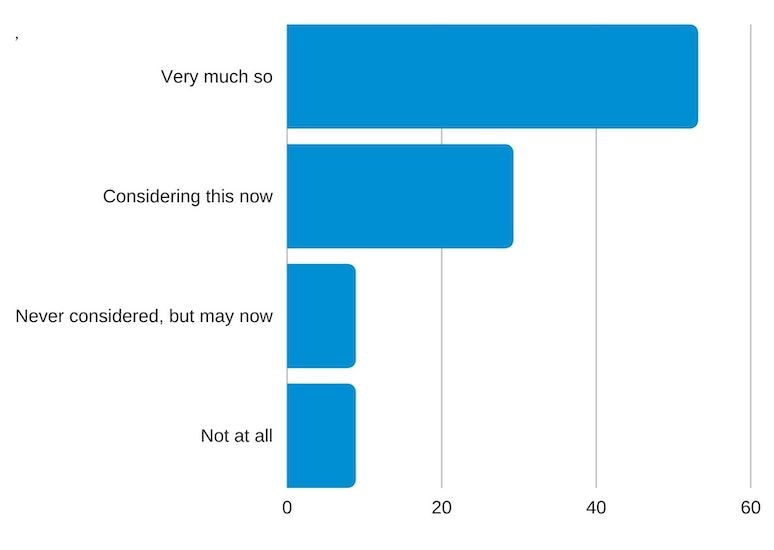Returning to Work and Travel: The CDC and SAP Concur Customers Share their Perspectives, Part 3
Part 3: Returning to Travel
In part two we discussed planning for a return to the workplace. And, just like adjusting work habits, adjusting the approach taken to travel is critical. The Centers for Disease Control during a July 16 webinar recommended only essential business travel at this time. But what is essential business travel?
“In my personal view ‘business essential travel’ would be deemed as ‘revenue generating’ travel and business operations essential followed by customer facing, as permitted,” adds Ralph Colunga, SAP Concur Thought Leader of T&E.
When your employees do return to travel, it’s important to assess the risk involved. As discussed by CDC’s Team Lead Allison Taylor Walker, PhD, MPH, here are some questions to ask:
All these are crucial to answer in order to return to travel safely. If you do end up traveling, you can mitigate risk by taking these steps:
- Is there a COVID-19 outbreak at your destination?
- Is there a COVID-19 outbreak in my community that I could possibly spread?
- Will I be able to safely socially distance and quarantine if necessary?
All these are crucial to answer in order to return to travel safely. If you do end up traveling, you can mitigate risk by taking these steps:
- Wash hands often. (If soap and water are not available, use hand sanitizer with more than 60% alcohol.)
- Avoid touching eyes and mouth.
- Avoid close contact with others.
- Wear a cloth covering.
- Cover coughs and sneezes.
In addition to the advice above, many companies are following these best practices on their return-to-travel journey while keeping their plans agile:
- Putting traveler health, safety, and well-being first: Many customers are ensuring that all employee information, such as mobile number, is updated in travel profiles, as well as making sure their online booking tool models current policies with helpful pop-up information. Ensuring travelers have access to apps such as TripIt Pro can alert travelers when flights change (see the new traveler resource center) and give safety information upon arrival. Having the ability to track and communicate with all employees, not just travelers, is also emerging as duty of care expands beyond just international travelers and expatriates.
- Developing a resilient travel policy: There’s a strong desire to connect people, processes, and systems so companies can quickly approve or review visibility into who is seeking travel and where (or when) a trip is booked, before company dollars are spent. The workflow for such a tool is being viewed not only by direct managers but also company security, medical, or travel teams who support a company’s duty of care policy. In some countries, such as Brazil, this approval is commonly accepted, but in the U.S., this was seen as an inconvenience in the past. This pre-trip tool also reduces the fluid visa or immigration issues that are evolving.
- Taking a safely phased approach to travel: Customers have their eyes set on incorporating travel booked outside of their corporate booking tool into one platform. By doing so, travelers have more options as situations change, while companies can stop T&E leakage that happens, despite everyone’s best efforts.
- Discovering that ground transportation is a new priority: Travel departments can help prioritize recommended providers (like ride shares or private car services) based on their cleanliness regime. Employees may look to use personal or rental forms of transportation in place of flying when possible, or use private car services or ride-share services. Figuring out how to automate mileage into expense reports is being addressed by many now.
- Bringing a new lens for travel partners: Many companies are using advanced reporting tools to help them re-assess their travel suppliers, ensuring that they are aligned with safety goals and flexibility is required.
- Enhancing the user experience: Companies are spending endless hours on how to make the new travel experience easier for employees. Travelers need a reliable app that can not only book travel and capture their expenses at the same time, but also connect to partners and other apps that will make their journey easier and safer.
Is your company more likely to consider installing a pre-trip approval process before employees travel?

Source: Return to Work and Return to Travel, SAP Concur webinar, July 16
For more information
Listen to the Return to Work Return to Travel webinar with the CDC and SAP Concur T&E expert Ralph Colunga to get additional insights to help your company return to its journey ahead. Email the CDC with any other questions.
See also:
Returning to Work and Travel: The CDC and SAP Concur Customers Share Their Perspectives, Part 1
Returning to Work and Travel: The CDC and SAP Concur Customers Share their Perspectives, Part 2
